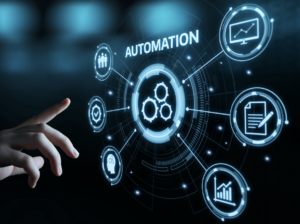
‘Manifesto’ Touts the Marriage of AI, Ops

Given the growing debate about whether AI qualifies as what used to be referred to as “appropriate technology,” a consensus is building around the notion that automation is ideally suited to enterprise IT, particularly since hybrid infrastructure has become central to nearly all business processes.
Hence, the growing movement toward AI operations, or AIOps, led by proponents such as the industry forum AIOps Exchange.
A new AIOps “manifesto” notes the centrality of IT and the need to automate more infrastructure. “This has forced developers of IT systems to switch from monolithic to modular designs, centralized to distributed architectures, static to dynamic configurations and multi-year to ephemeral life-spans at the component level,” the authors note.
AIOps refers to the next generation of IT technology that uses machine learning and AI techniques to help automate workflows and make life a bit easier for IT managers charged with keeping the servers up, the network on and the distributed applications flowing.
Among the challenges is rapid adoption of micro-services and application container technologies increasingly running on hybrid cloud infrastructure. The shift to distributed applications has outstripped the capacity of traditional rules-based automation.
That, the AIOps report notes, creates an opening for emerging “logic-driven” inference algorithms that could, for example, be used to create “smart alerts” that rout event notifications to the appropriate operators.
Hence, a batch of new AIOps vendors has emerged to address what appears to be a natural fit for AI deployment. All are chasing what is estimated last year to be a $25 billion market with an annual growth rate projected to be 25 percent.
The AIOps survey released last month argues that the marriage of AI and IT operations makes business sense as digitization expands. Along with automating the human-machine interface, AIOps also addresses the explosion of “noisy” system data faced by IT managers.
An analysis of those events might reveal a pattern. For instance, latency in an application could be linked to a router failure. Therefore, those events could be clustered by IT teams as manifestations of the same problem occurring close to each other in time and space.
Once those patterns are discerned, inference algorithms could be developed to spot statistical patterns and help automate remediation.
“The amount of data that IT Ops teams need to analyze has exploded with the multiplication of components and the dynamic nature of their interconnections,” the manifesto emphasizes.
Automating event correlation also would help accelerate IT support for systems whose status changes constantly based on what the survey notes are ephemeral and complex interactions between computing, storage and networking components. The AIOps report argues that standard visual analytics tools can no longer keep pace with fast-morphing hybrid infrastructure.
The key to reaping a return on an AI investment is a coordinated deployment of what the study identifies as the foundational “five dimensions of AIOps,” including: data set selection, pattern discovery, inference, communications and, ultimately, “context-aware” automation.
Recent items:
AIOps Emerges as ‘Air Traffic Control’ for IT



























